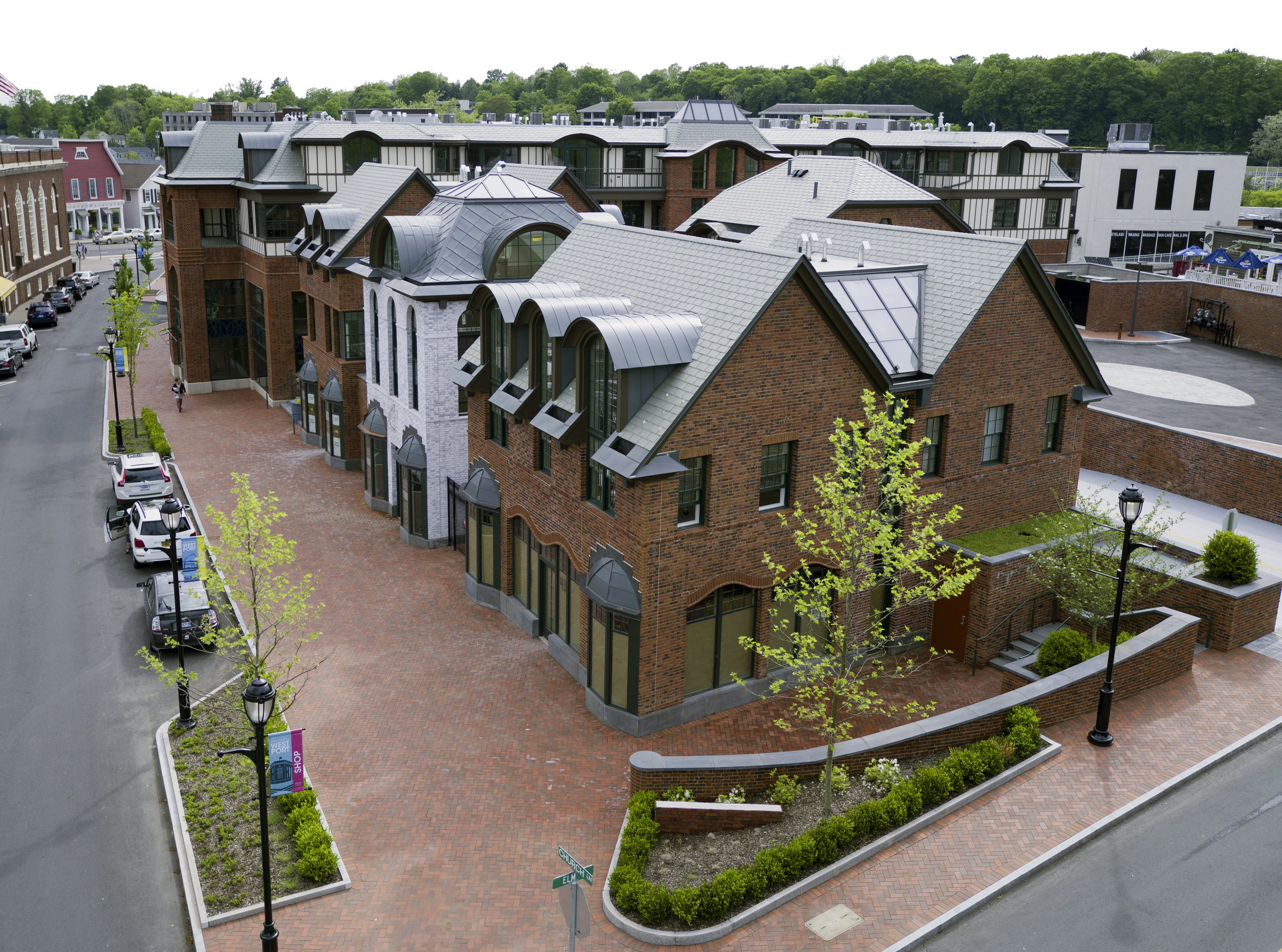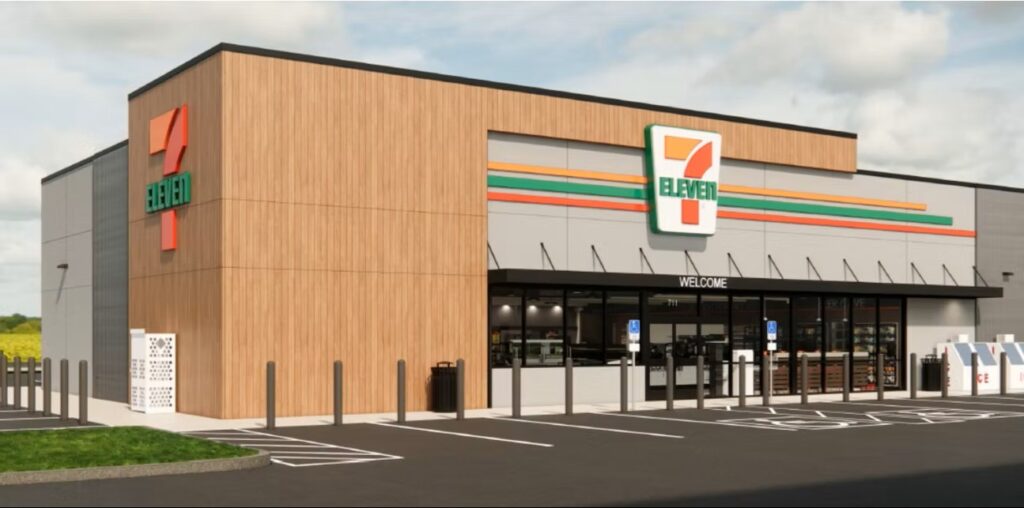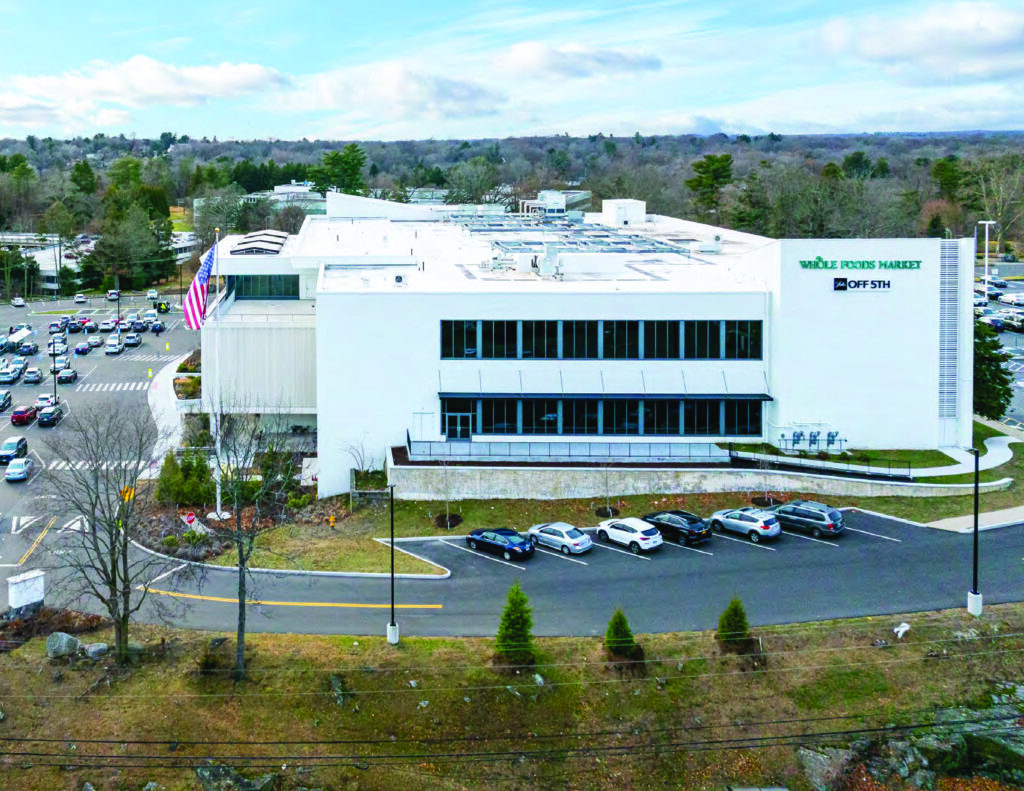Though uncertainty — economic, political and otherwise — has been a theme of 2024, retail real estate markets throughout the Northeast have proven itself reliably strong. Even certain headwinds like high construction costs and minimal quality space to accommodate growth have ultimately helped fuel robust fundamentals throughout the region. Now, brokers, investors and developers in those markets are looking ahead with optimism and faith in persisting tailwinds.
Quality Space Shortage
Vacant retail space in Northeast markets has been hard to come by this year, and professionals in the region aren’t expecting that to change anytime soon. The equation, they say, is simple. While retailers’ appetite for expansion has remained healthy, new construction and deliveries have been very limited.
“Almost nothing has been built in the past 10 years,” says Dan Zelson, principal with Charter Realty. “There’s really just very little new product.”
Steve Gillman, partner at The Shopping Center Group (TSCG), notes that while some smaller, single-tenant buildings may still be coming on line, “nobody is building a big strip center with 100,000 square feet.”
“There’s that imbalance of supply and demand: demand by the retailer and lack of supply of space,” adds Daniel Taub, senior vice president and national director of retail and net lease divisions at Marcus & Millichap.
Research corroborates these observations of diminished levels of new construction. Colliers reports that of the top five metros nationally, New York City jointly ranked as the market with the least amount of new retail space under construction during the third quarter of this year. This distinction was shared with Austin, Texas, with both cities having approximately 1.5 million square feet of product under construction. This is hardly more than a quarter of the retail development that was underway in the Dallas-Fort Worth metro during the same period (4.1 million square feet).
One of —if not the — primary reason for the paucity of development is simply heightened costs of construction. Taub says that in some ways, though, the reduction in volumes of new construction is a blessing in disguise. In addition to increasing values of existing properties and benefiting their owners, the tighter conditions are ensuring that only high-quality projects that pencil out are being green lit, as well as preventing excess, untenable growth by retailers.
Retailers, though, must contend with regional vacancy rates that are very low. “More brands are chasing fewer opportunities,” says Matthew Harding, CEO of New Jersey-based Levin Management Corp., which provides retail services like property management, leasing, financial management and reporting, construction management and development.
According to research executed and published by Marcus & Millichap, retail vacancy in Northern New Jersey was at 3.1 percent in the fourth quarter of this year, marking a year-over-year decrease of 20 basis points.
This trend is reflected in other corners of the region. In the New Haven-Fairfield County metro in Connecticut, year over-year vacancy dropped by 30 basis points to 4.7 percent.
An Established Market
According to Taub, the low rates of retail vacancy can also be attributed to other region-specific dynamics.
Taub describes the Northeast as a mature market, very distinct from regions like the Southeast. While Southern states have seen staggering levels of migration and population growth in recent years, as well as demographic changes, Taub says that aside from isolated instances of gentrification in areas in and around older urban markets like Philadelphia, New York and Boston, the Northeast is steady and well established. “If you look at the demographics, you really haven’t seen a significant decrease,” Taub notes. “At the same time, the Northeast is just not having any population growth.”
“Atlanta is continuing to balloon and mushroom, and you don’t see that in the Northeast,” continues Taub. “The region went through that phase a long time ago, and the maturity has created a lot of barriers to entry as relates to new development.” Additionally, Taub says that the very topography and geography of the Northeast itself can further restrict opportunities for new construction. In addition, the region can be an especially tough market to penetrate for those retail concepts that require a specific type of space or piece of land, he says.
Retailers that might be tempted to forgo physical stores in light of these challenges should reconsider, though. “What’s kind of become clear is that the online retailers really do need a brickand-mortar presence,” Zelson attests, explaining that online andphysicalretail “work together a whole lot better than we thought.” Those who were sounding the death knell on physical retail at the advent of online shopping have been thoroughly proven wrong, and now, sources say that retail concepts that apply an omni-channel approach continue to be the most successful.
In spite of the plentiful aforementioned barriers to entry in the brick-and-mortar retail market, the Northeast is seeing growth as retailers continue to expand. “You’ve seen strong growth from retailers because of the consumer spending,” observes Taub.
Big Fish, Low-Vacancy Pond
Amid low vacancy rates and stiff competition for occupancy of quality spaces, retail rents in the Northeast are naturally (and predictably) increasing.
Given this trend and that landlords can afford to be choosy, larger retailers are better poised to find space — and success. Credit tenants, for instance, offer landlords and their investors greater financial security, often in the form of corporate guarantees, and promises of revenue. Sometimes, this comes at the expense of less prominent concepts, which get pushed out of the market entirely or into retail centers of lower quality.
However, Zelson says that there are still strong regional tenants entering and expanding in the market. “We represent a lot of tenants with five or fewer locations,” reports Zelson, who distinguishes these tenants from newer concepts without established brands. “They can pay rent,” he says. “It’s very difficult for a startup to pay that kind of rent, and it definitely hampers them.”
Landlords are also in a position to be highly selective and are less willing to take chances on newer or smaller tenants. “People are being very careful about the financial strength of tenants and making sure they have enough cash or financing to make it through a build-out,” says Zelson. “You’re seeing a lot less risk taken on the tenants that go into these projects.”
Steven Gartner, executive vice president at CBRE’s Philadelphia office, agrees that relying on local retailers can spell trouble for landlords of unanchored community shopping centers because “the local retailer is simply not one that expands with lots of locations.”
For their part, tenants — especially national brands — are interested in obtaining greater allowances of tenant improvement (TI) dollars to help offset the high rents. Asking and receiving are different things though, and brokers say that few landlords are granting requests for bigger TI allowances, with owners reluctant to put forth a lot of money for tenant build-outs.
In fact, Gartner relays that some owners may even be biased toward selecting tenants that will require less landlord spending to get started. “Some landlords are choosing options like pickleball concepts because they have very little need for build-out money or cash infusion,” says Gartner.
Gillman of TSCG concurs, adding that landlords would even rather give months of free rent rather than invest more cash in TI allowances.
If retailers understand that they must pay elevated rents, they are also showing a reluctance to commit that is proportionate to these rates. Harding says that retail users “are drawn to locations that check the boxes for tenant mix while offering great demographics, easy access and high visibility.”
Between tenants and landlords conducting their own due diligence, retail leases are slow to be actualized, despite the appetite for tenant spaces. “Getting leases across the finish line is taking longer than ever before,” attests Zelson. “People are [being] more thoughtful before they sign on the dotted line.”
Harding adds that both retailers and landlords are utilizing new technologies to this end. “On both sides, we are seeing increased use of new technologies, including AI, in tandem with traditional tools and talent to inform the decision making process,” he says.
Alana Friedman, vice president of retail brokerage at JLL, says that landlords generally are okay with a little delay, trusting in their privileged position. “Landlords are definitely being a lot more patient, knowing who’s out there and who’s coming to the table,” she says. “They have less of an appetite to just do the first deal that comes to the table.”
Drugstores Ailing
One segment of the retail market that is struggling is drugstores. This observation should be unsurprising to those who have followed the headlines of Rite Aid’s bankruptcy. Last October, the corporation filed for Chapter 11 protection and received roughly $3.4 billion in financial commitments from lenders to support the business through the restructuring process. Since then, the company has implemented waves of store closures. In September, The Wall Street Journal reported that the drugstore giant had proposed a rightsizing plan to creditors that would include closing 400 to 500 of its 2,100 total stores.
Rite Aid’s woes might be attributed in part to legal troubles following its role in supplying opioid drugs and the attendant lawsuits. But it is not the only such retailer facing difficulties; Zelson gestures to CVS and Walgreens as other examples of weakness in that space.
Necessity Fuels (Re)invention
The struggles of drugstore operators will, at least, open up some space in markets that have seen historically low vacancy rates. Given the general plight of drugstores, though, it is unlikely that tenants of the same kind will backfill the newly available storefronts.
Instead, sources predict that vacant drugstores, which often comprise coveted spaces, will be repurposed for new types of users.
While ground-up development activity has been largely stalled, redevelopment and repurposing projects — like those that might be executed on empty drugstores — have proven increasingly more attractive. “Infill markets like ours are seeing more redevelopment than regions with land available to support new construction,” explains Harding.
In 2023, Levin launched a comprehensive redevelopment of Blue Star Shopping Center, a 420,000-square-foot retail development located in Watchung, New Jersey. Spurred by a new, 72,000-square foot lease with grocer ShopRite for an in-property relocation, the project includes façade updates, new lighting, parking lot upgrades, landscaping redesign, improved signage and the addition of infrastructure that supports electric vehicle charging stations. This is all in addition to the construction of the new ShopRite space, which is expected to be completed by summer 2025.
ShopRite’s previous space at the property will be reconfigured for new tenants, and Levin is already (not surprisingly) seeing significant tenant interest. Planet Fitness has already signed a lease, and negotiations are underway with other national brands.
Harding says that redevelopment projects, which often involve complex approval processes and construction management elements, require experience, skill and a focus on current market and tenant needs.
Other significant projects of this ilk in the Northeast include Simon’s completion of a 130,000-square-foot redevelopment at its Burlington Mall property in metro Boston. In addition to updated elements throughout the center and the addition of a 30,000-square-foot outdoor space, approximately 50 new retailers and eateries were added to the tenant roster during the project.
Enclosed malls are prime candidates for redevelopment, says Gartner. In metro Philadelphia, he is excited for the reimagining of Neshaminy Mall, which will be significant and include residential units. Exton Square Mall, located west of Philadelphia, may also undergo extensive redevelopments to remain more relevant, according to Gartner.
Another $500 million mall redevelopment got underway this May in Eatontown, New Jersey, roughly 50 miles outside New York City. New York City-based Kushner is redeveloping Monmouth Mall, which will comprise 900,000 square feet of retail and restaurant space upon completion, with Whole Foods Market serving as the anchor.
Grocer Gains
Grocery anchors are more than common these days. David Townes, managing director of retail brokerage at JLL, points out that there is a high demand for grocery space in Northern New Jersey, where grocers that are both new to and established in the region are in expansion mode. Newer to market grocery concepts include Amazon Fresh and Sprouts Farmers Market, and Townes says that there is also “a lot of demand from existing operators.” These include ShopRite, which Townes says is working on smaller format concepts, as well as Whole Foods and Trader Joe’s.
Whole Foods is also venturing into the territory of smaller formats, debuting its first Daily Shop concept this September in the Upper East Side of Manhattan.
Grocery retail dominance also prevails in the Philadelphia metro, where Gartner says grocer expansion is especially strong in the suburbs, with traditional, specialty and discount grocers growing their footprints. GIANT recently announced plans to open a new, 50,000-square-foot store in the city. Construction of the space, which is situated within Federal Realty Investment Trust’s Andorra Shopping Center, is scheduled to begin next year.
Mixed-Use Momentum
Along with grocery-anchored retail, mixed-use development is experiencing a moment in the sun.
Of the developments that are underway in the current environment, sources say that mixed-use projects are particularly strong. In Cheshire, Connecticut, a 107-acre mixed-use development is currently ongoing. Charter Realty’s development arm, Zelco Properties & Development, is leading the project, which features a 300-unit multifamily community nearing delivery and a hotel, in addition to a large shopping center.
Regency Centers has acquired and is constructing the retail component of the master-planned community, which will feature tenants including Whole Foods, T.J. Maxx, Barnes & Noble and Chipotle Mexican Grill. The shopping center is expected to be complete by the end of 2025.
“That kind of project is what we’re trying to replicate across the country right now,” says Zelson. “We just find that the mix of retail, residential and entertainment space really works well.”
In Scarborough, Maine, developer Crossroads Holdings LLC is underway on Town Center, a $300 million mixed-use project situated roughly 10 miles southwest of Portland. Upon completion, the center will feature 320,000 square feet of retail space, 60,000 square feet of medical offi ce space, 240 residential units and a boutique hotel, along with various green spaces. The developer has partnered with Boston-based Wilder Cos. to provide strategic retail and leasing services for the project.
Gartner notes that the concept of “mixed-use” is not necessarily a new one, as “people living above the store is about as old as commercial real estate itself. And in many ways, the success of mixed-use in the current context is a simple continuation of the old adage that “retail follows rooftops.” Zelson does specify, though, that beyond builtin rooftops, good locations are also crucial ingredients in the recipe for success.
Investment Sales
Recent investment sales reflect many of the trends highlighted by sources, including the strength of grocery retailers.
In October, CBRE brokered the sale of a portfolio of three grocery-anchored retail centers totaling 376,462 square feet in New Jersey’s Ocean County. ShopRite anchors each of the centers — Bay Plaza, Jackson Plaza and Lacey Mall — which were together about 94 percent leased at the time of sale. Developer Pasbjerg Development Co. sold the properties for an undisclosed price.
Another notable sales of late includes the disposition of Mall at Fox Run, a 250,000-square-foot retail development in Newington, New Hampshire, which Torrington Properties bought from Morgan Stanley for an undisclosed price.
In New York, Chase Properties recently acquired Creekside Plaza in Ithaca. Tenants at the 180,000-square-foot retail center, which was 95 percent leased at the time of sale, include Dick’s Sporting Goods, HomeGoods, Barnes & Noble and O’Reilly Auto Parts.
Gartner says CBRE has seen an increase in investment sales activity as interest rates have seemed to stabilize, and he adds that there is still a “massive” amount of capital in the markets looking for deals, with retail investments proving especially attractive.
Investment sales are likely to continue to pick up as interest rates settle. Gillman hopes that there will be another dip or two in rates, which should also, in turn, translate to less costly construction financing. Even so, brokers and developers expect that interest rates and inflation will remain the main headwinds heading into the next year.
Headwinds aside, prospects for the retail real estate market in the Northeast are expected to remain bright.
Harding puts it plainly: “Retail is on a positive trajectory — one that is expected to continue.”
To read this article online, click here





